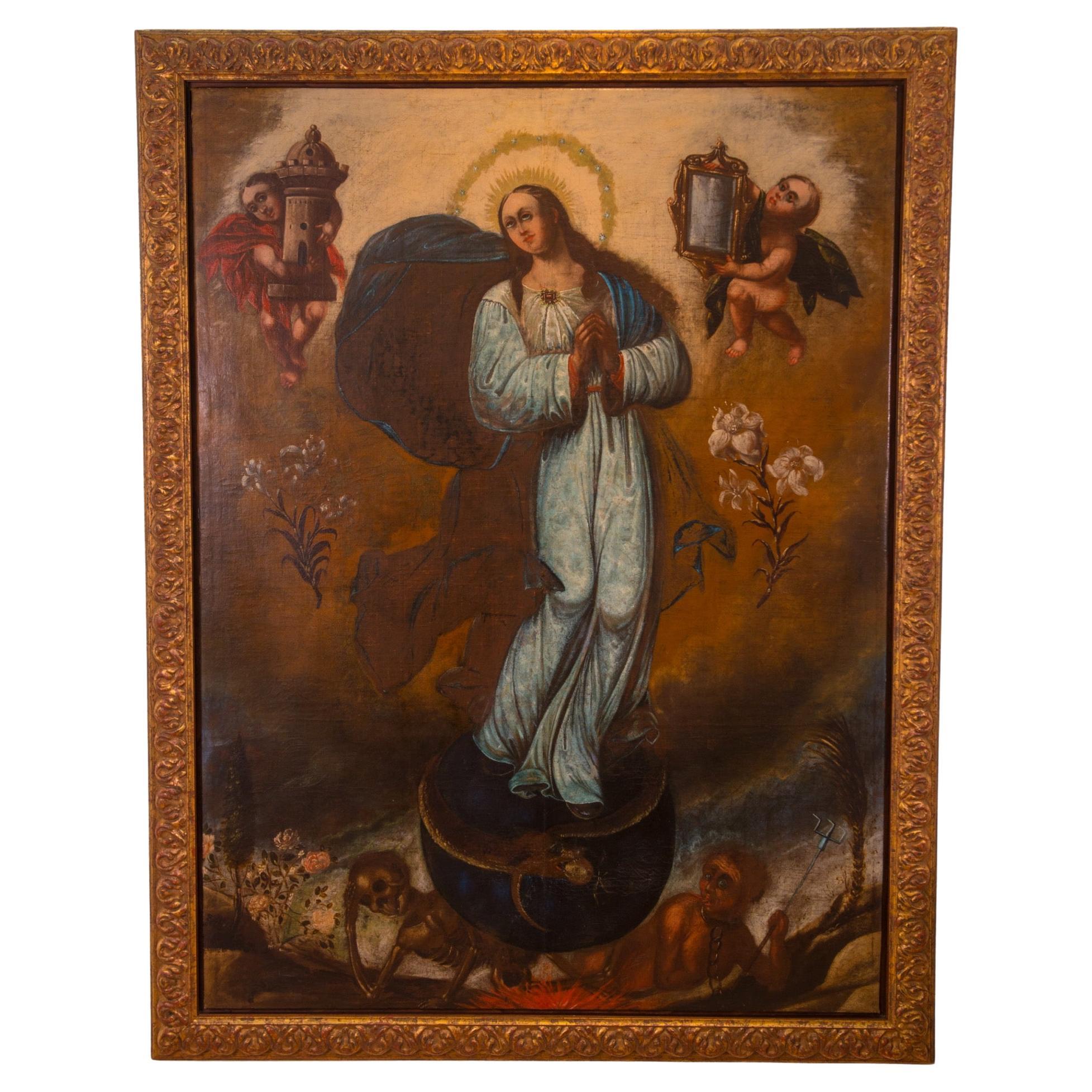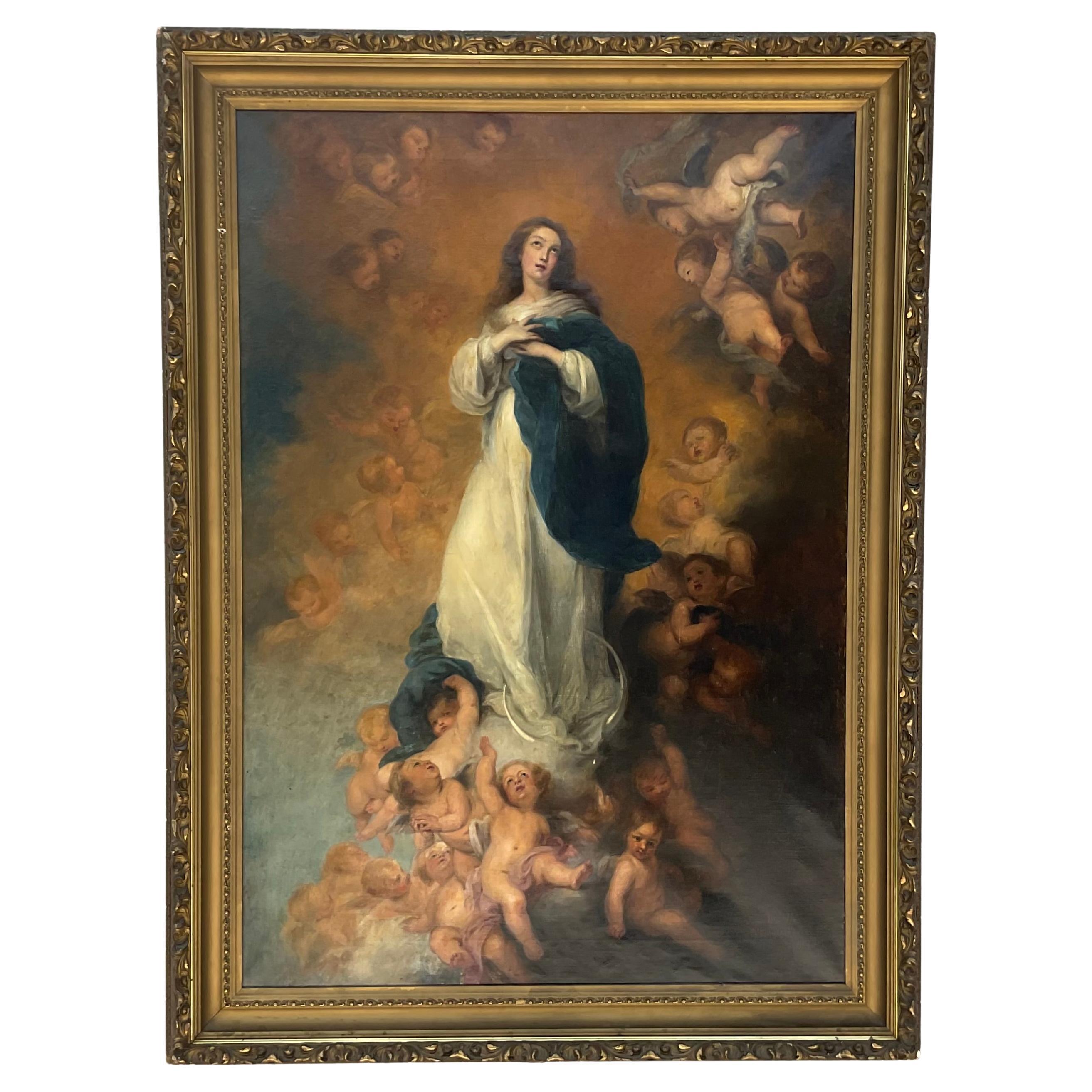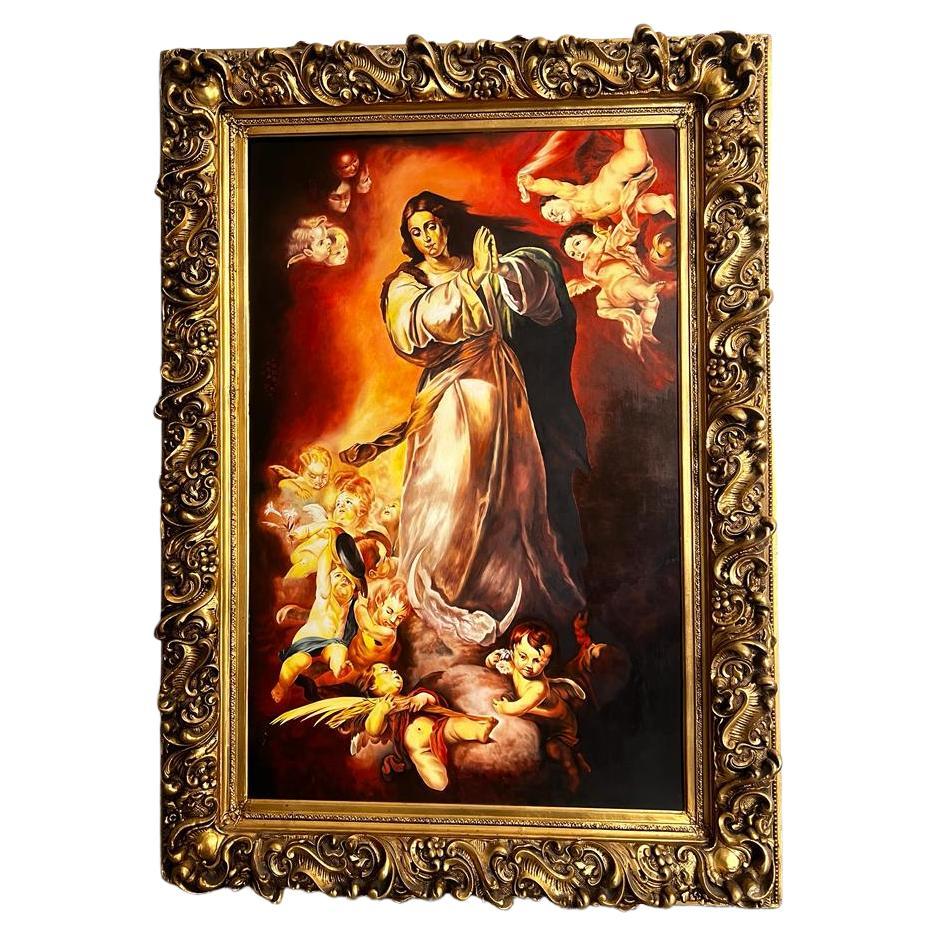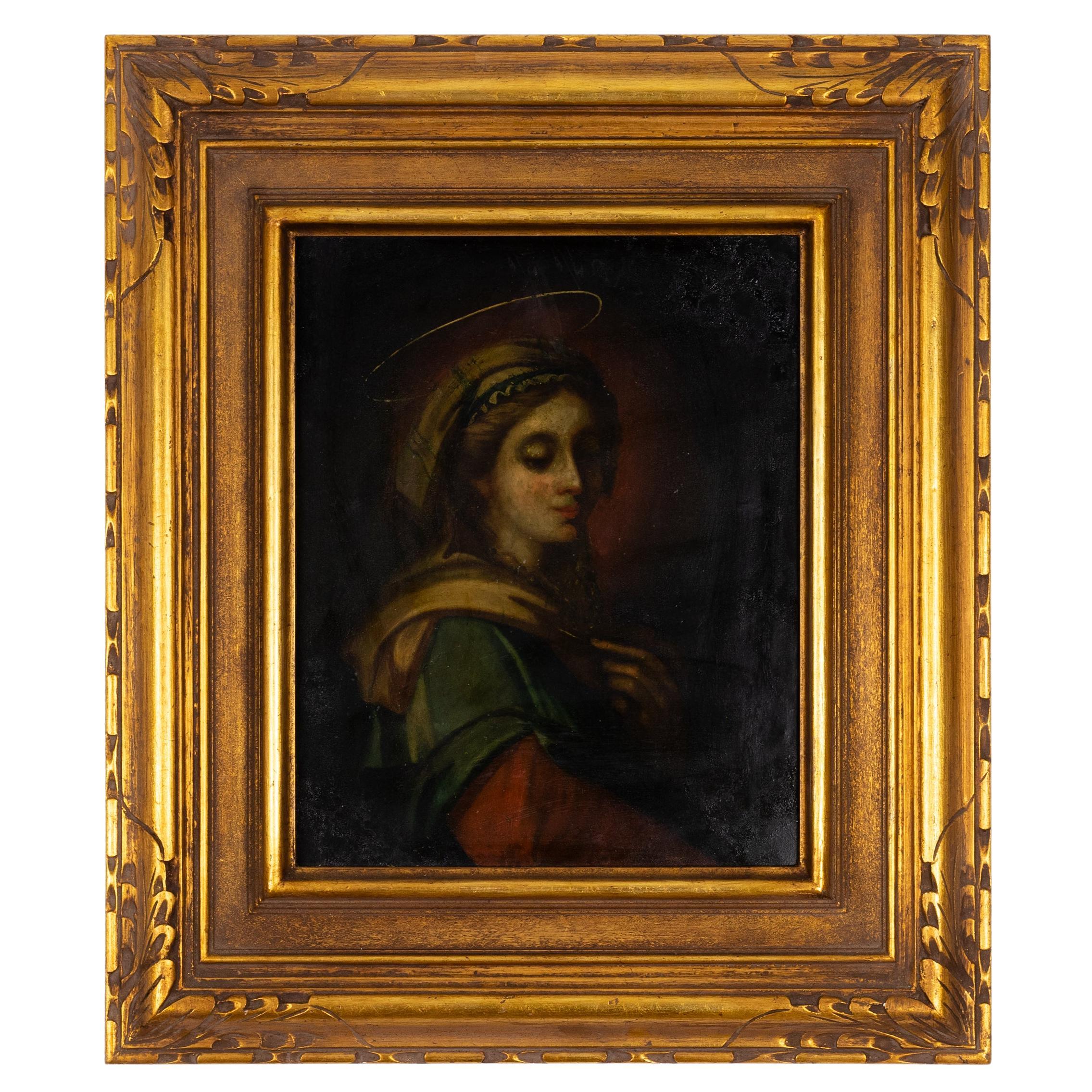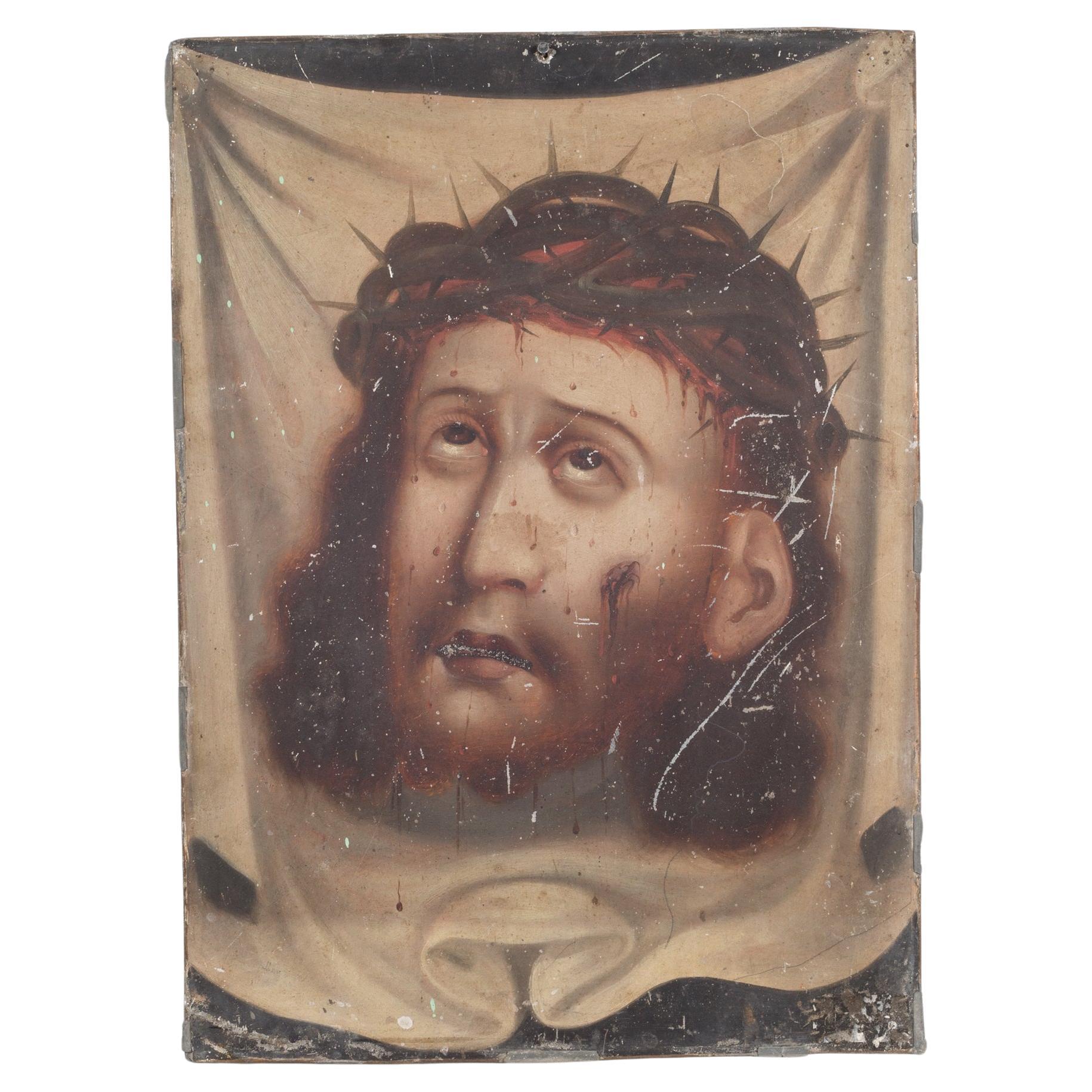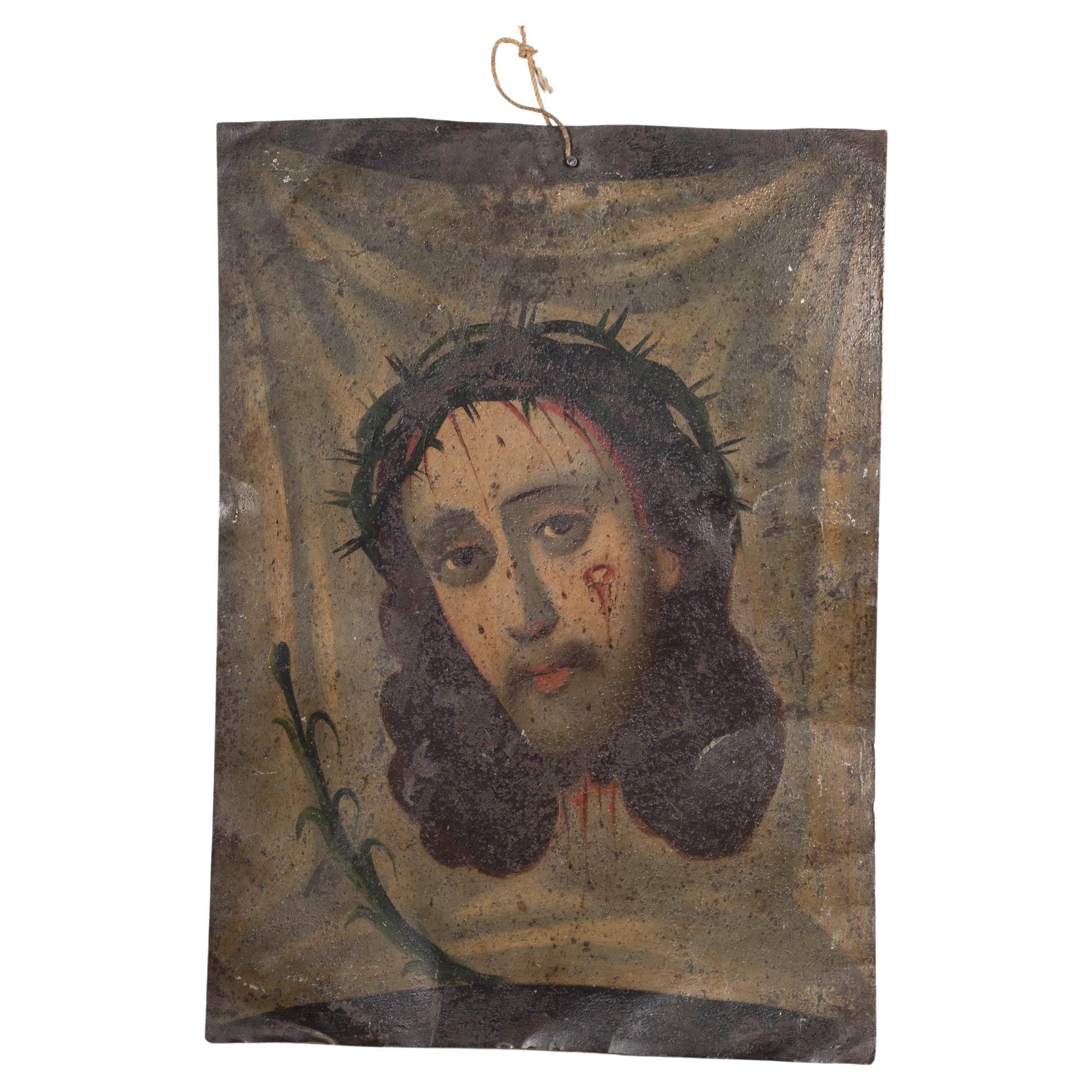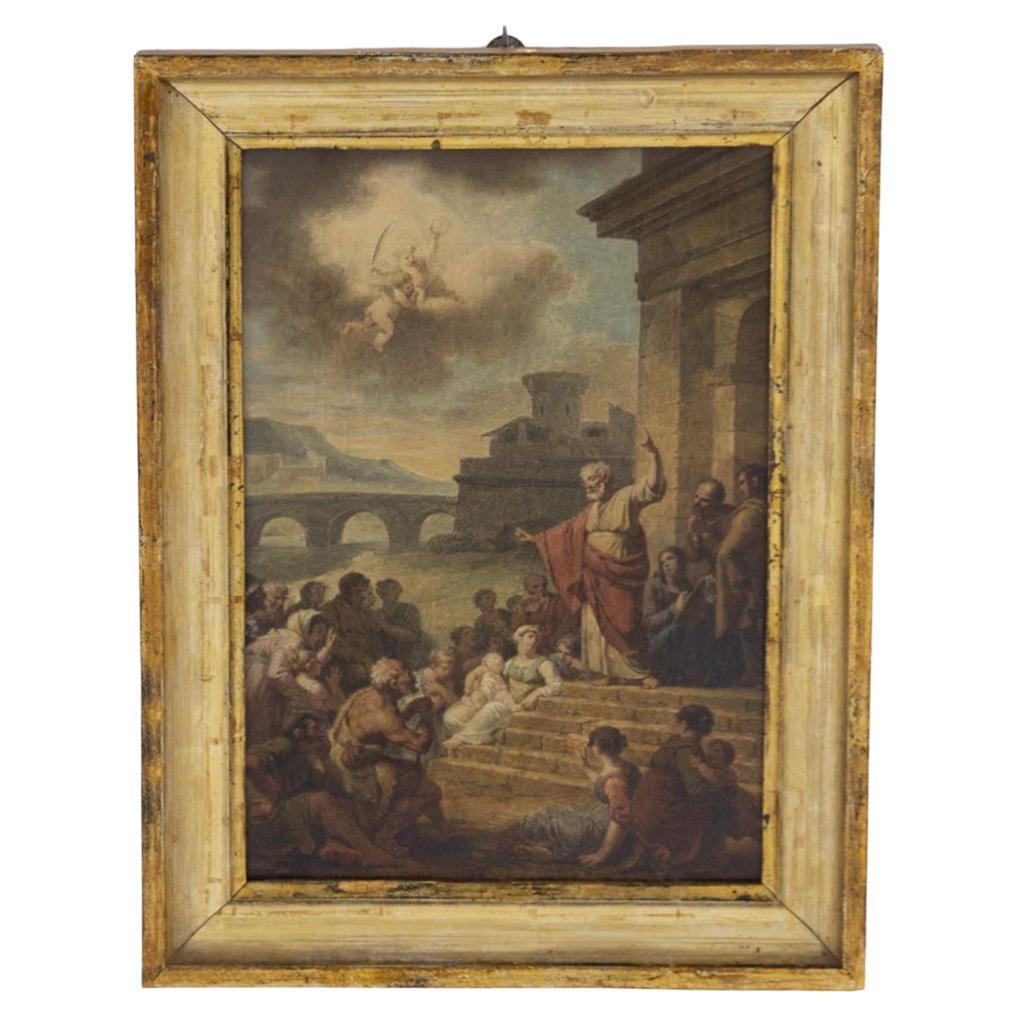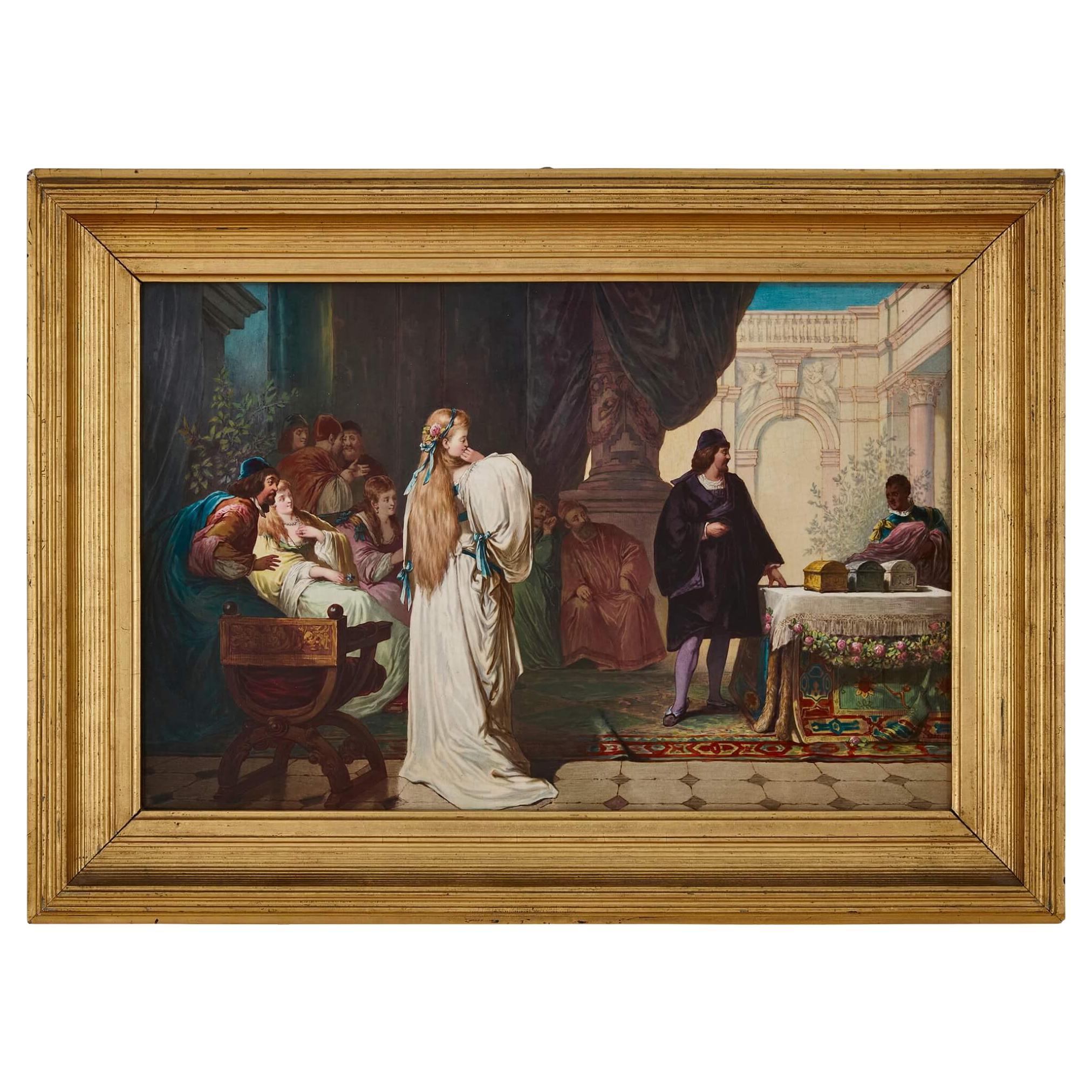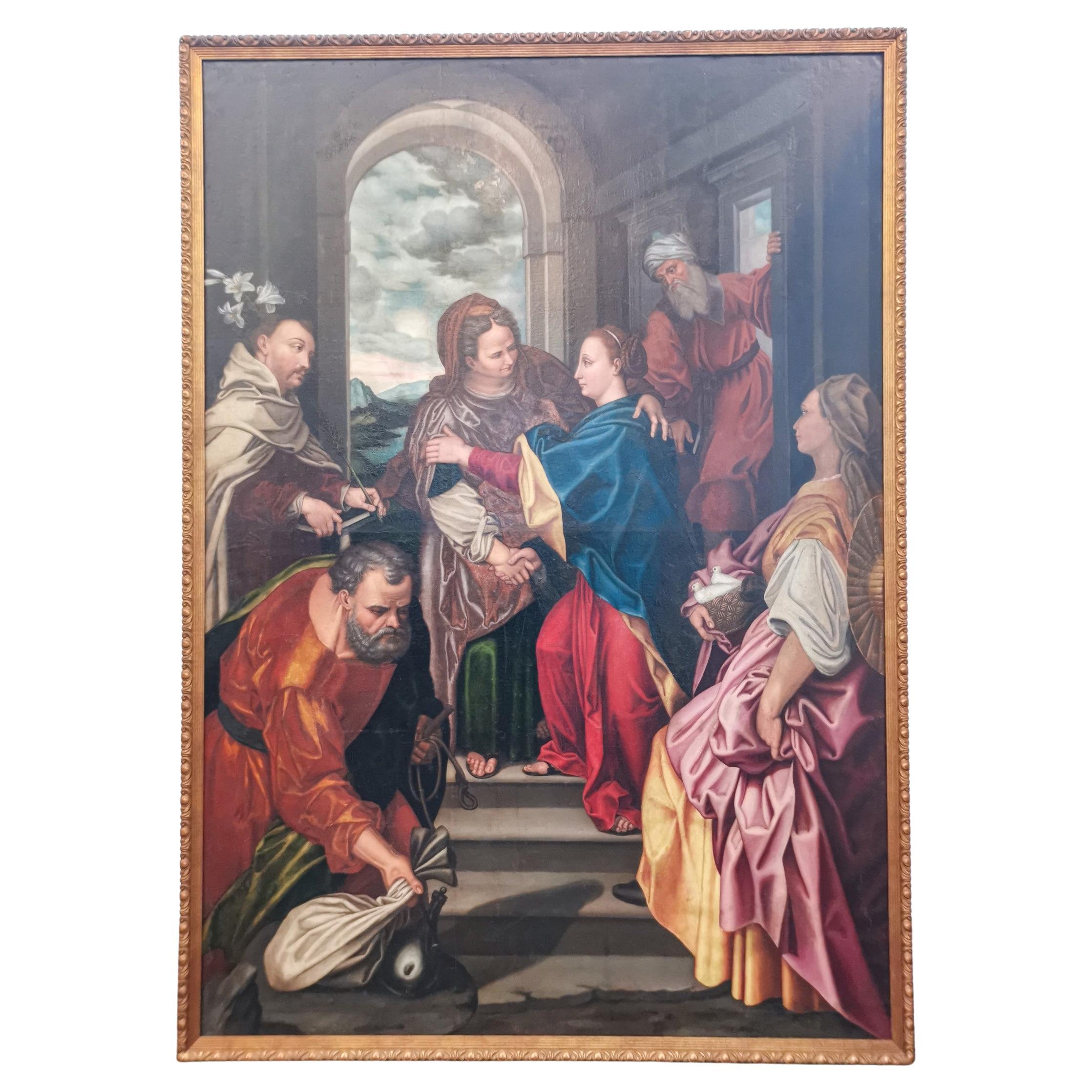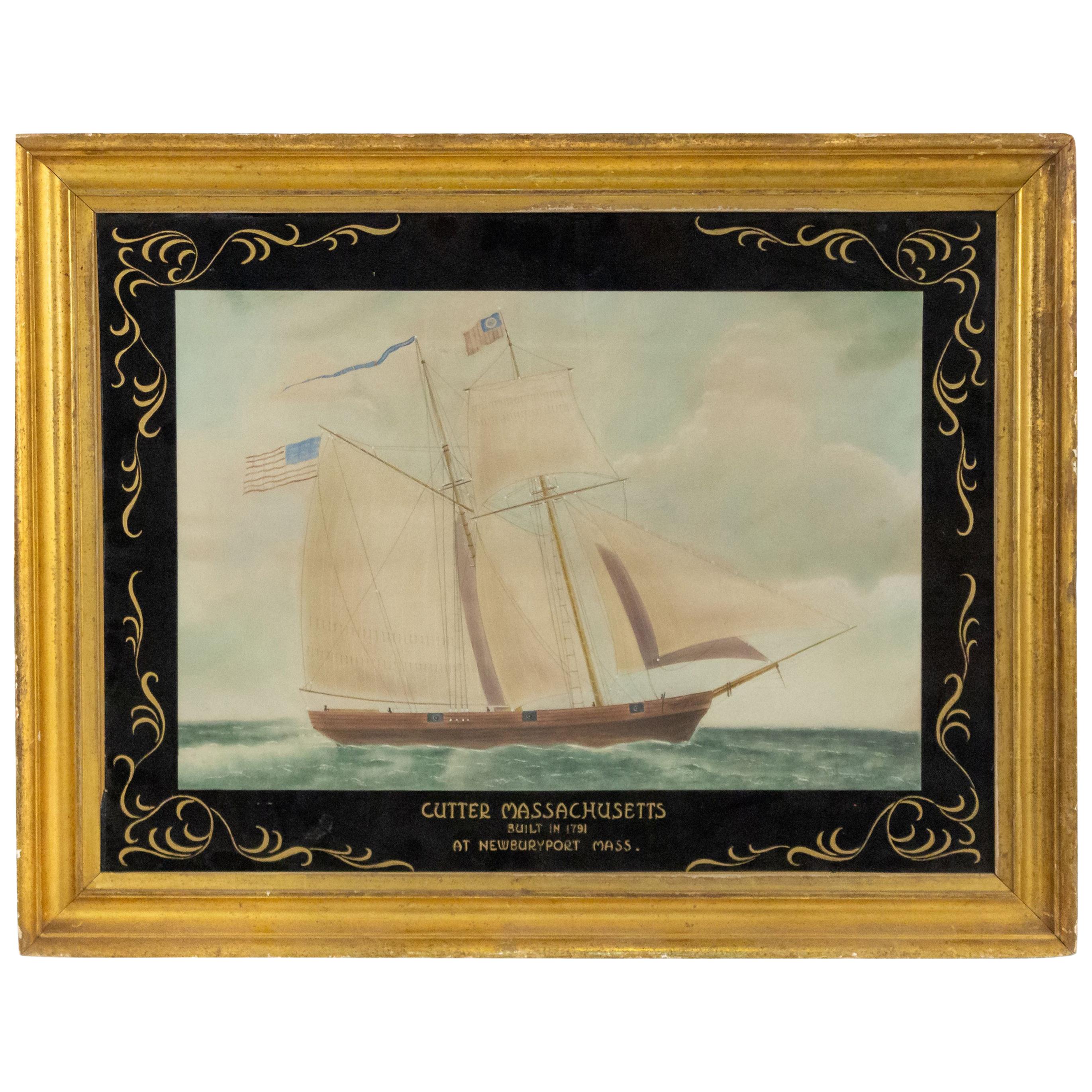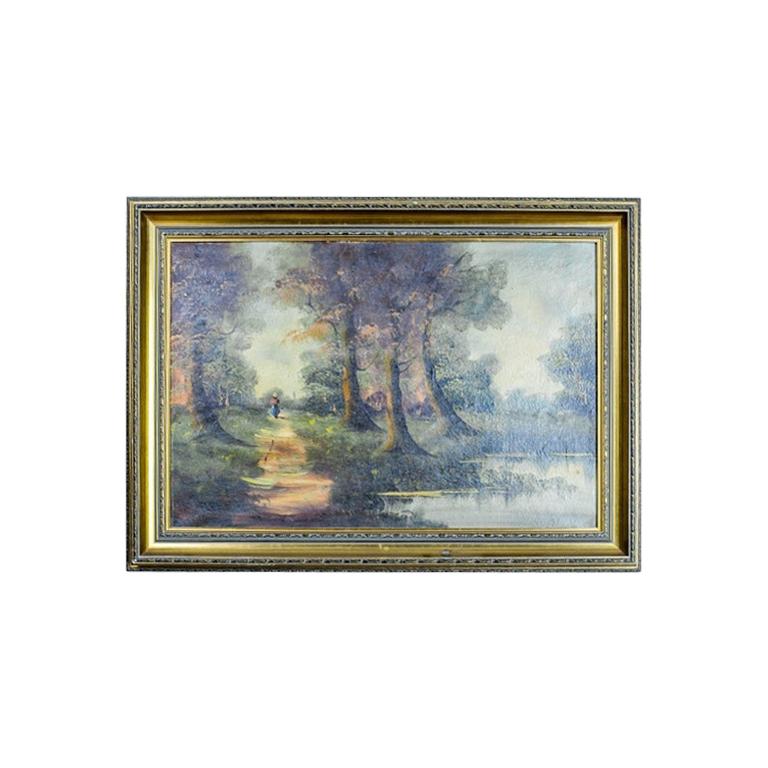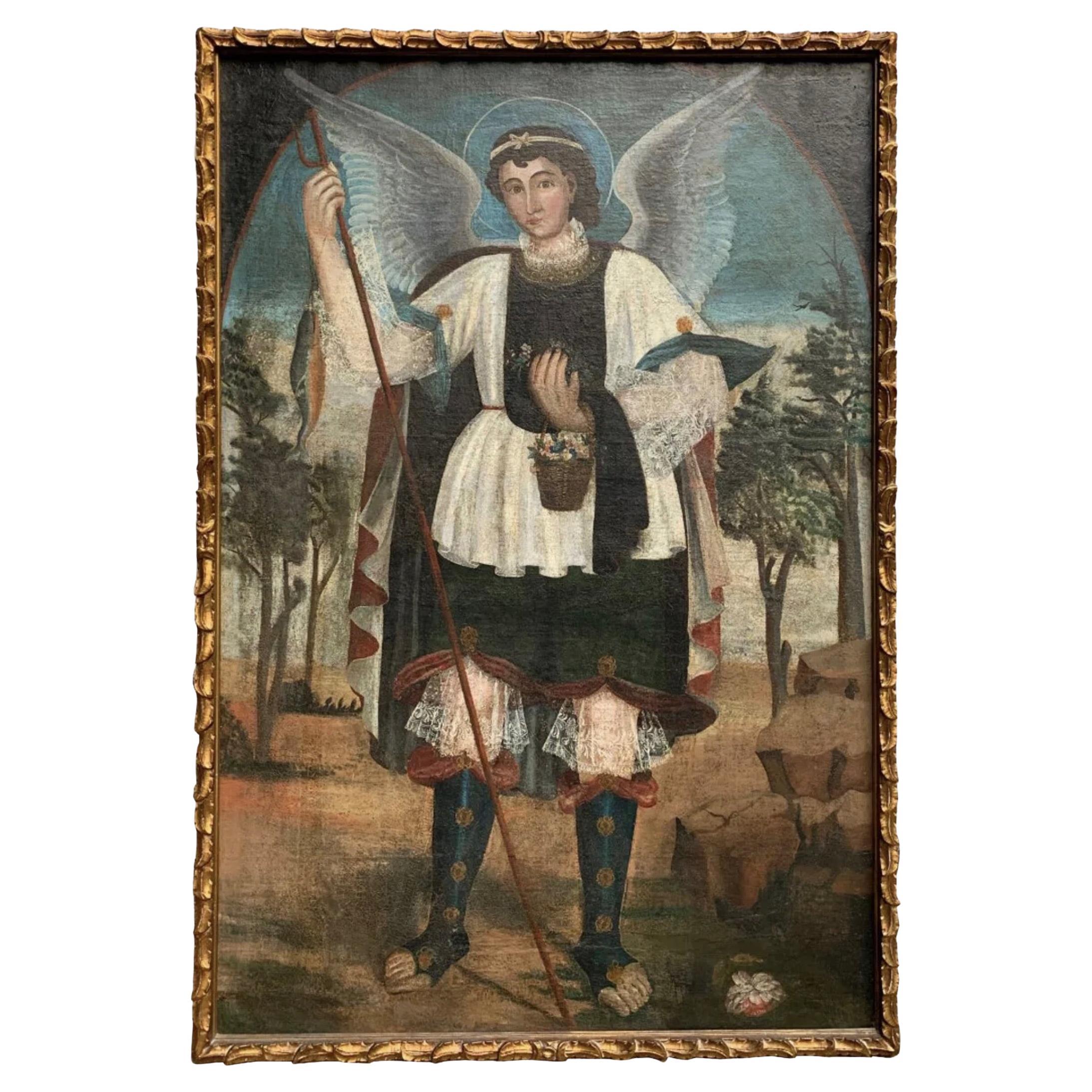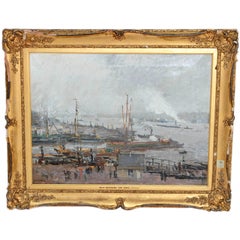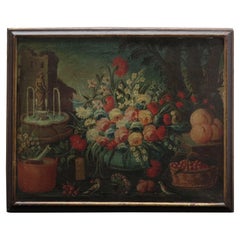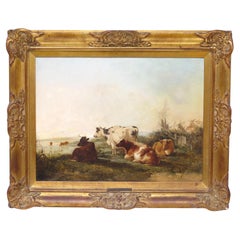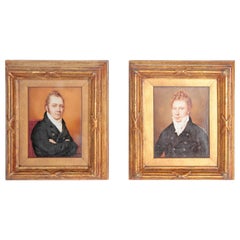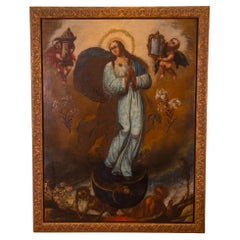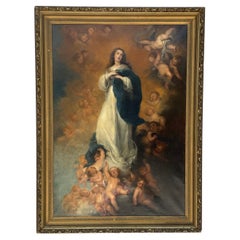
Retablo, Depicting La Purisima Concepcion (The Immaculate Conception)
View Similar Items
Want more images or videos?
Request additional images or videos from the seller
1 of 12
Retablo, Depicting La Purisima Concepcion (The Immaculate Conception)
About the Item
- Dimensions:Height: 19.75 in (50.17 cm)Width: 17 in (43.18 cm)Depth: 1 in (2.54 cm)
- Style:Spanish Colonial (Of the Period)
- Materials and Techniques:
- Place of Origin:
- Period:
- Date of Manufacture:Circa 1850
- Condition:Wear consistent with age and use.
- Seller Location:Dallas, TX
- Reference Number:Seller: NB1stDibs: LU867735879122
About the Seller
5.0
Vetted Professional Seller
Every seller passes strict standards for authenticity and reliability
Established in 1989
1stDibs seller since 2009
143 sales on 1stDibs
Typical response time: 6 hours
Authenticity Guarantee
In the unlikely event there’s an issue with an item’s authenticity, contact us within 1 year for a full refund. DetailsMoney-Back Guarantee
If your item is not as described, is damaged in transit, or does not arrive, contact us within 7 days for a full refund. Details24-Hour Cancellation
You have a 24-hour grace period in which to reconsider your purchase, with no questions asked.Vetted Professional Sellers
Our world-class sellers must adhere to strict standards for service and quality, maintaining the integrity of our listings.Price-Match Guarantee
If you find that a seller listed the same item for a lower price elsewhere, we’ll match it.Trusted Global Delivery
Our best-in-class carrier network provides specialized shipping options worldwide, including custom delivery.More From This Seller
View All"Ship Entering the Canal" by Dutch Artist Cossaar
By Jacobus Cornelis Wyand Cossaar
Located in Dallas, TX
"Ship Entering the Canal" / Boating on the Thames by Dutch painter Cossaar (1874-1966), signed lower left, in tones typical of a grey day, realistically depicted with an impressionis...
Category
Early 20th Century English Paintings
Materials
Canvas
Oil on Canvas Painting of a Floral Arrangement
Located in Dallas, TX
Oil on canvas painting of a floral arrangement with faintains, birds, pears, cherrys and peaches.
Spanish colonial 18th Century
Category
Antique 18th Century Spanish Colonial Paintings
Materials
Canvas
Dutch Pastoral Landscape in the Manner of Paulus Potter (1625-1654)
Located in Dallas, TX
pastorial landscape picture with cattle in the Manner of Paulus Potter, (Dutch, 1625-1654), oil on canvas, picture has been relined, some overpainting, signed front lower left POTTER...
Category
Antique 17th Century Dutch Baroque Paintings
Materials
Canvas, Paint
Pair of Period Portrait Miniatures / English Regency Gentlemen
Located in Dallas, TX
Pair of well-painted portrait miniatures, matted and framed, English gentlemen, Regency period, handsome and well-dressed brothers??? Father and son???
Category
Antique Early 19th Century English Regency Paintings
Materials
Paint
A Swiss Mountain Landscape by Sydney Lee (English, 1866-1949)
Located in Dallas, TX
A Mountain Landscape by Sydney Lee (English, 1866-1949), signed lower right
MEASUREMENTS
29.75" H x 35.5" W x 2" D
23.25" H x 29" W image
Category
Antique 19th Century English Paintings
Materials
Canvas, Wood, Paint
Oil on Canvas Landscape by Henry Charles Payne IL, MA
Located in Dallas, TX
An American oil on canvas beautifully painted in a realistic manner of a hayfield. In the foreground and trees in the distance. Heavy impasto technique adds impressionist feeling. ci...
Category
Antique Late 19th Century American Barbizon School Paintings
Materials
Canvas, Wood
You May Also Like
Virgin of the Immaculate Conception, 16th Century, Oil on Canvas
Located in North Miami, FL
16th Century Spanish Colonial Oil on canvas painting of the Virgin of the Immaculate Conception. In this representation of the Virgin Mary being f...
Category
Antique 16th Century Spanish Spanish Colonial Paintings
Materials
Canvas, Wood, Paint
The Immaculate Conception Painting After Bartolome Esteban Murillo
By Bartolomé Esteban Murillo
Located in Bradenton, FL
19th Century Oil on Canvas Painting of The Immaculate Conception of Los Venerables, after Bartolome Esteban Murillo. Painting depicts the Virgin Mary dressed in vibrant white and blu...
Category
Antique 19th Century Spanish Baroque Paintings
Materials
Canvas
Art Deco Virgin Mary Immaculate Conception Aquarell on Wood Panel 1920
Located in Doha, QA
This is a magnificent example of an Art Deco version of Madonna’s Immaculate Conception painted in ca 1920s Era in Vienna.
Masterfully done, the painting has very dramatic bright Color scheme-typical for this period. It is definitely a great fit and a conversation piece for any kind of home, either contemporary, traditional or modern.
The Painting is set in a dramatic large heavy 19th century gold gilded frame...
Category
Vintage 1920s Austrian Art Deco Paintings
Materials
Gold
Baroque Religious Painting Of Immaculate Conception, Gilt Frame, 17th Century
Located in Lisbon, PT
This 17th-century Baroque painting, in oil on copper, captures a serene portrayal of the Immaculate Conception, draped in yellow silk robes w...
Category
Antique 17th Century Italian Renaissance Paintings
Materials
Copper
19th C. Mexican Retablo "Veronica's Veil", c.1880
Located in San Francisco, CA
About
An original 19th century Mexican folk retablo "Veronica's Veil" or "El Divono Rostro" in Spain . Oil paint on tin.
The Veil of Veronica, known in Italian as the Volto Santo or Holy Face, is a Roman Catholic Relic which, according to legend, bears the likeness of the Face of Jesus that was imprinted on it prior to Jesus' crucifixion. According to Roman Catholicism, Saint Veronica encountered Jesus in Jeruselum on the way to Calvary. When she paused to wipe the sweat (Latin, suda) off his face with her veil, his image was left on the veil.
In the small village of Osa de la Vega in Spain, there lived a couple who led a very pious life. They were Gregorio de la Torre and Isabel Corral. From their father, Juan Montilla, they inherited a picture of the Face of Jesus or the Divino Rostro. A story that is told one day, to the amazement of many who confirmed its veracity, the picture began to perspire with living blood. News of this extraordinary event spread swiftly and widely throughout the land.
CREATOR Unknown.
DATE OF MANUFACTURE c.1880.
MATERIALS AND TECHNIQUES Oil Paint on Tin.
CONDITION Good. Wear consistent with age and use.
DIMENSIONS H 14 in. W 10 in.
HISTORY
Retablos, better known as 'laminas' in Mexico, are small oil paintings on tin, wood and sometimes copper which were used in home altars to venerate the almost infinite number of Catholic saints. The literal translation for 'retablo' is 'behind the altar.' This unique genre of art, deeply rooted in European history, was brought to Mexico with the arrival of the Spanish and then ultimately adopted by New World mestizo natives to become what is known today as the Mexican folk retablo.
The retablo was an art form that flourished in post conquest Mexico and then ultimately, with the introduction of inexpensive mediums such as tin, reached its pinnacle of popularity in the last quarter of the 19th century. With some exceptions, mostly untrained artists from the provinces worked to produce and reproduce these sacred images; some subjects painted more prolifically than others. A typical "retablero" may have reproduced the same image hundreds, if not thousands of times in his or her career.
These oil paintings were sold to devout believers who displayed them in home altars to honor their patron saints. There are virtually hundreds of saints, each invoked to remedy a different situation. "San Ysidro Labrador," the patron saint of farmers, is venerated for good weather...
Category
Antique 19th Century Mexican Folk Art Paintings
Materials
Tin
19th c. Mexican Retablo "Veronica's Veil" c.1880
Located in San Francisco, CA
ABOUT
An original 19th century Mexican folk retablo "Veronica's Veil" or "El Divono Rostro" in Spain . Oil paint on tin.
The Veil of Veronica, known in Italian as the Volto Santo or Holy Face, is a Roman Catholic Relic which, according to legend, bears the likeness of the Face of Jesus that was imprinted on it prior to Jesus' crucifixion. According to Roman Catholicism, Saint Veronica encountered Jesus in Jeruselum on the way to Calvary. When she paused to wipe the sweat (Latin, suda) off his face with her veil, his image was left on the veil.
In the small village of Osa de la Vega in Spain, there lived a couple who led a very pious life. They were Gregorio de la Torre and Isabel Corral. From their father, Juan Montilla, they inherited a picture of the Face of Jesus or the Divino Rostro. A story that is told one day, to the amazement of many who confirmed its veracity, the picture began to perspire with living blood. News of this extraordinary event spread swiftly and widely throughout the land.
CREATOR Unknown.
DATE OF MANUFACTURE c.1880.
MATERIALS AND TECHNIQUES Oil Paint on Tin.
CONDITION Good. Wear consistent with age and use.
DIMENSIONS H 14 in. W 10 in.
HISTORY
Retablos, better known as 'laminas' in Mexico, are small oil paintings on tin, wood and sometimes copper which were used in home altars to venerate the almost infinite number of Catholic saints. The literal translation for 'retablo' is 'behind the altar.' This unique genre of art, deeply rooted in European history, was brought to Mexico with the arrival of the Spanish and then ultimately adopted by New World mestizo natives to become what is known today as the Mexican folk retablo.
The retablo was an art form that flourished in post conquest Mexico and then ultimately, with the introduction of inexpensive mediums such as tin, reached its pinnacle of popularity in the last quarter of the 19th century. With some exceptions, mostly untrained artists from the provinces worked to produce and reproduce these sacred images; some subjects painted more prolifically than others. A typical "retablero" may have reproduced the same image hundreds, if not thousands of times in his or her career.
These oil paintings were sold to devout believers who displayed them in home altars to honor their patron saints. There are virtually hundreds of saints, each invoked to remedy a different situation. "San Ysidro Labrador," the patron saint of farmers, is venerated for good weather...
Category
Antique 19th Century Mexican Folk Art Paintings
Materials
Tin
